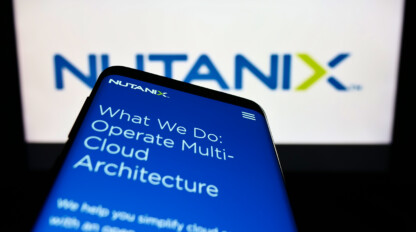Wi-Fi 6: The Newest Generation of Wireless Technology

For many, high-speed Wi-Fi is not a want, but a need. Whether it’s for remote work, e-commerce, urgent communication, etc., Wi-Fi is often regarded as a necessity. To accommodate this unprecedented demand, a new generation of Wi-Fi comes out every five years or so. Most recently, we were introduced to Wi-Fi 6.
What is Wi-Fi 6?
Wi-Fi 6, also known by its IEEE standards designation of 802.11ax, is the newest generation of wireless technology available today. Perhaps the most notable difference is the increased bandwidth capabilities. Wi-Fi 6 does not disappoint in this area, offering a potential speed of 9.6 Gbps – nearly triple the bandwidth available over Wi-Fi 5 (802.11ac). So, you may ask, how are they achieving this increased bandwidth? To answer that question, we’ll need to look at the previous generations of Wi-Fi technology.
Previous Generations of Wi-Fi
In the US, the Federal Communications Commission, or FCC, governs the transmission characteristics of each spectrum. Previous generations of Wi-Fi have relied on the 2.4 GHz and 5 GHz bands. The 2.4 GHz band is notable for its ability to carry a wireless signal over longer distances. However, much lower speeds are possible using the 2.4 GHz band. The 5GHz band excels at achieving higher speeds, but the shorter wavelength is unable to carry the signal as far as the 2.4 GHz band.
Now, back to the FCC regulations. The FCC allows the use of 80 MHz of the 2.4 GHz spectrum for Wi-Fi, and 500 MHz of the 5 GHz spectrum for Wi-Fi. Why do we care? We care because the 80MHz available in the 2.4 GHz band allows for 3 20MHz channels, while the 500 MHz available in the 5 GHz band allows for 25 20 MHz channels. Access points adjacent to each other in an office setting should never be configured to use the same channels. If the channels overlap, one access point must wait for the other access point to finish transmitting before it begins to transmit.
So, what have we learned? We’ve learned that the greater amount of the spectrum the FCC allows us to use, the greater number of channels we can create. This allows us to reduce the overall competition for channel use and improve performance in dense environments. There is, however, a tradeoff to creating more channels. Larger channel widths allow for greater bandwidths. If we choose to use all 25 of our channels available at 20 MHz channel width, we are reducing our bandwidth. Every environment is different, we must balance our need for bandwidth with our need to reduce interference in the environment.
Why Should You Be Excited About Wi-Fi 6?
So, how does Wi-Fi 6 improve over an already impressive Wi-Fi 5? Wi-Fi 6 uses the 6 GHz band. On this new band, the FCC has been especially generous, offering us 1200 MHz of the spectrum for use with Wi-Fi. That gives us the ability to create 59 20 MHz channels! So, let’s say we don’t need 59 20 MHz channels to combat interference in our shared office space. That is great news! Instead of using 59 20 MHz channels, we can now use 29 40 MHz channels. This allows us to increase our bandwidth while keeping the variety of channels available to reduce interference. All the major players have Wi-Fi 6 capable devices on the market today. If you are not already using the benefits of 802.11ac, there are a wide variety of options available to choose from.
Speed
The maximum throughput of Wi-Fi 6 across multiple channels is 9.6 Gbps, giving it higher download and upload speed than Wi-Fi 5. This becomes increasingly relevant as file sizes continue to grow and high-collaboration remote work continues to rise. It also can achieve up to 75% latency, handling large amounts of network traffic more efficiently.
Security
In addition to higher speed, Wi-Fi 6 adds an extra layer of security for users. Wi-Fi Protected Access (WPA) uses passwords for encryption, which has been a standard security protocol for a long time. The implementation of increased password security using the Dragonfly Key Exchange system is one of the biggest improvements. It uses a more sophisticated method of authentication with the Wi-Fi network, making passwords more difficult to crack.
Battery Life
Utilizing Wi-Fi 6 can even increase the battery life on certain devices due to the incorporation of Target Wake Time (TWT). TWT allows for more efficient communication between the router and device, only activating it when necessary. This results in less time and energy searching for a wireless signal, saving the device battery life to use when the user engages it.
At ivision, our Network team is equipped with the technology and expertise to help your business make the best decision for your network needs. We’ll empower your IT team with infrastructure solutions that are flexible, scalable and secure. Learn more about our network capabilities or contact us today!



